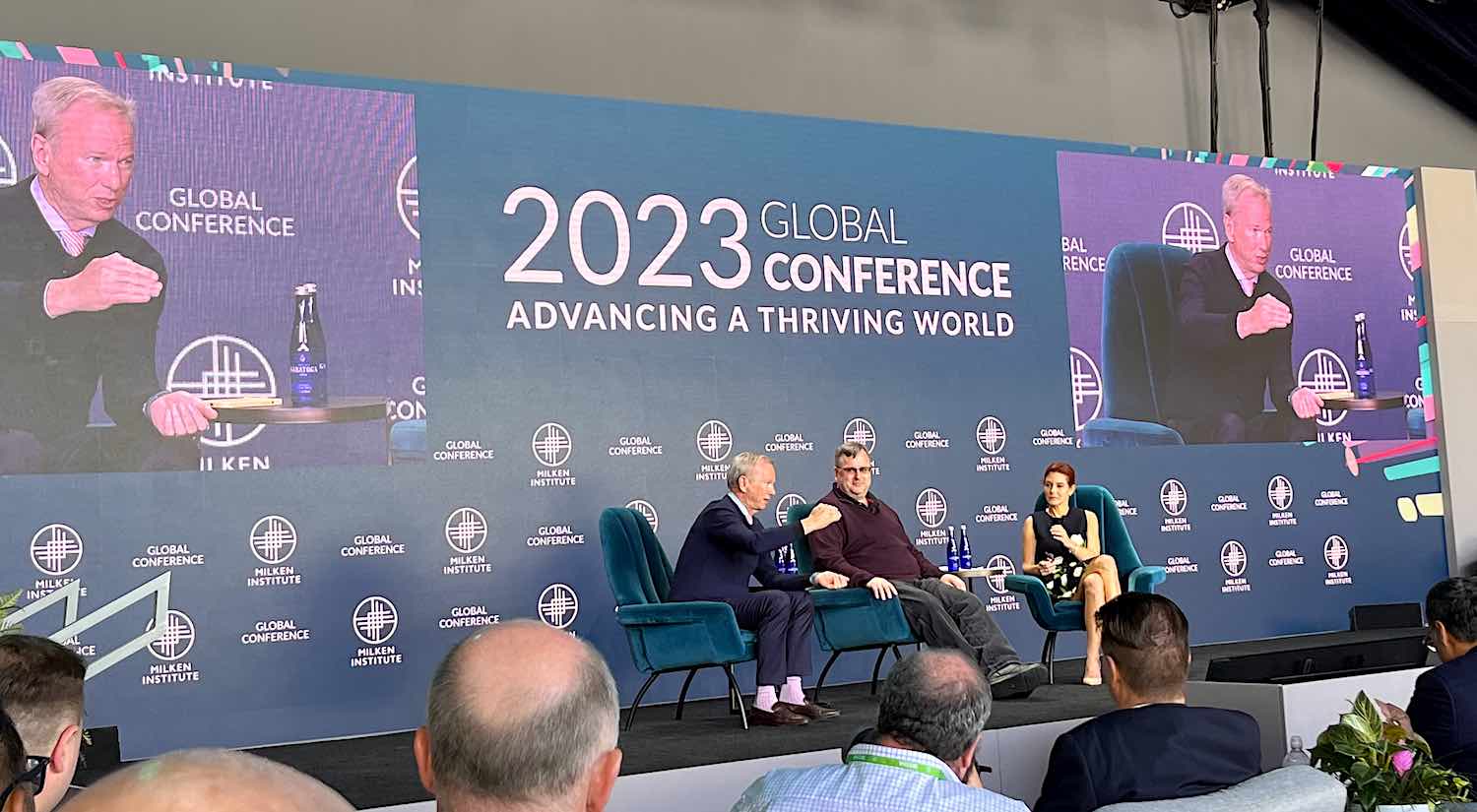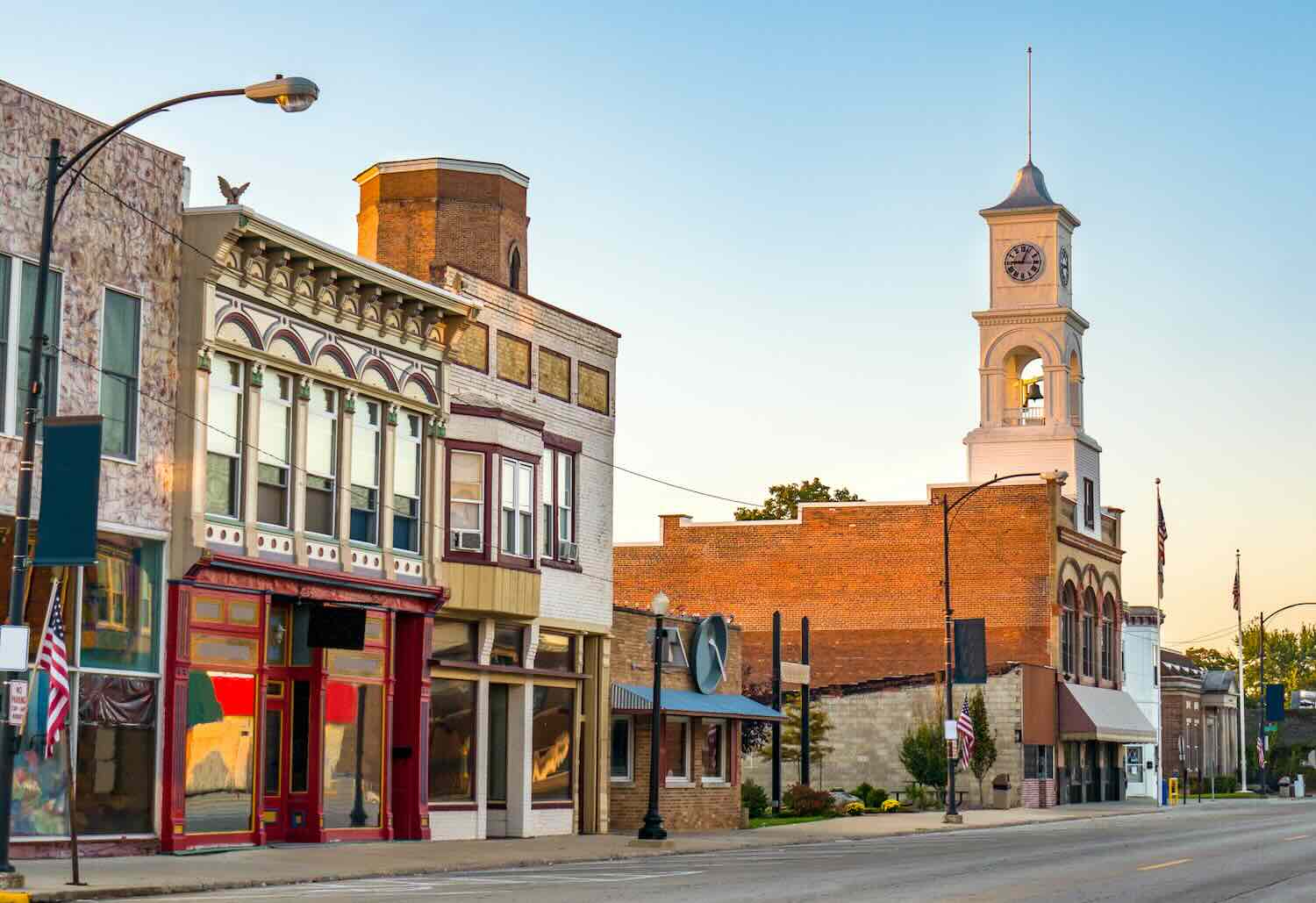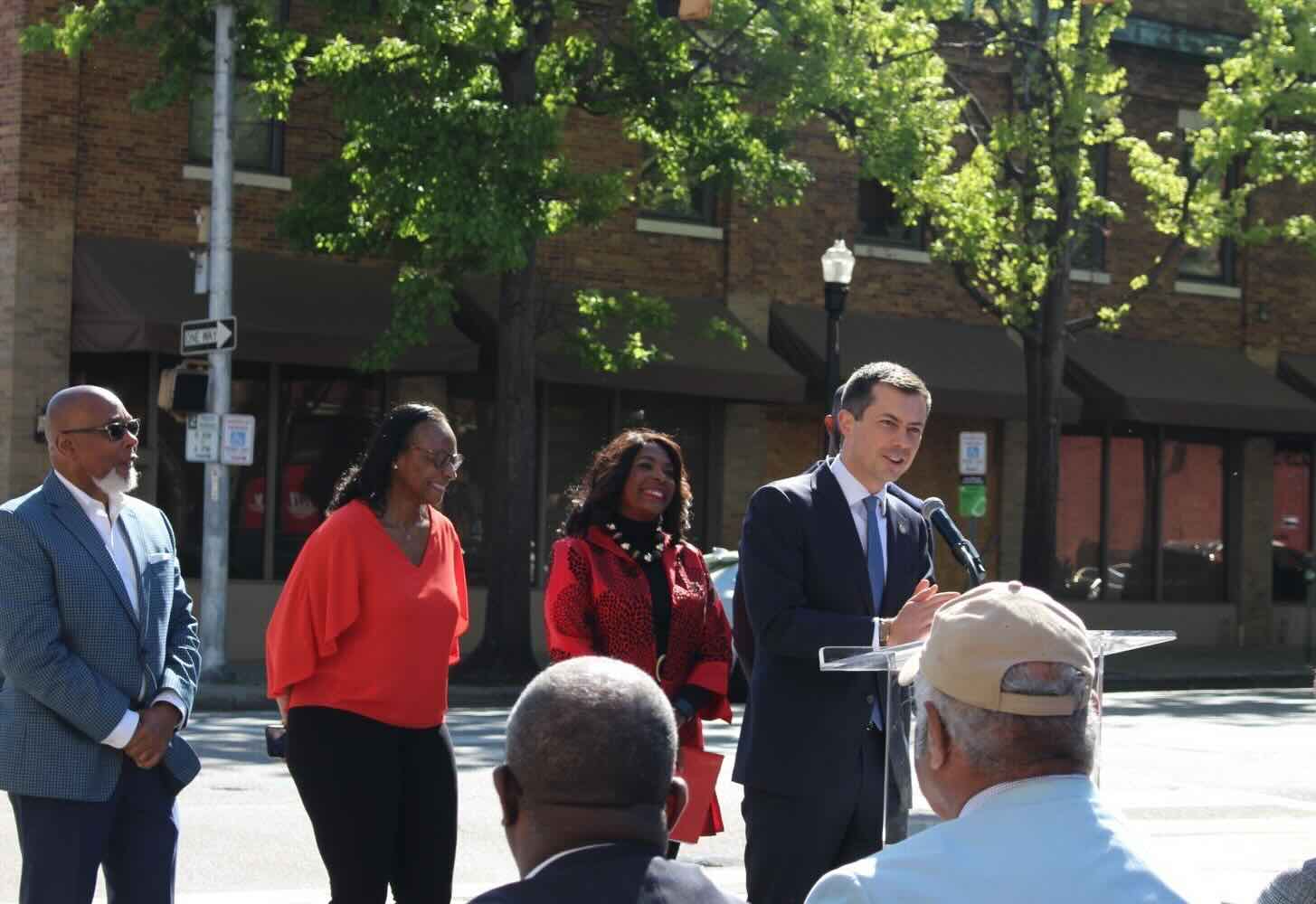ImpactAlpha, May 4 – Like cartoon characters running in air, impact investors best not look down.
Gone are the low interest rates and ready capital providers, steady economic growth and stable geopolitics that underpinned the current generation of impact investing.
Yesterday’s quarter-point interest rate hike by the U.S. Federal Reserve came in the same week that First Republic collapsed into the arms of JPMorgan Chase (and other banks wobbled). The escalating debt ceiling showdown spooked insiders who warned that this time could be indeed different.
“As our chief economist likes to say, at higher rates bodies will continue to float to the top over the course of the summer,” David Hunt, chief of PGIM, told the Milken Global conference in Beverly Hills this week. PGIM is the $1.5 trillion asset management business of Prudential Financial.
“The question is, are rates and spreads going to stay this high and for long and cause a wave of bankruptcies?” KKR’s Pete Stavros asked on a private equity-focused panel at Milken Global.
And with the nation already hitting its current borrowing limit, the Fed hikes bring the next debt-ceiling crisis even closer. Every 1% rise in rates adds another $2.7 trillion in additional interest rates payments over a decade for the U.S. government, noted Alan Schwartz of Guggenheim Partners.
Stubborn resilience
The impact investing ecosystem has yet to feel the full impact of the changed environment.
“Many of us have been concerned and thinking about all the macroeconomic headwinds, but we have not yet seen loss rates or loss of income or things similar to what happened, for example, in 2008, show up in the current time,” Jacob Haar of Community Investment Management said on a recent ImpactAlpha podcast.
Community lenders including LISC and Calvert Impact report continued investor appetite for their impact notes.
“Is this environment forcing investors to step back from community development finance? Or, are they willing to respond with ‘catalytic capital’ that specifically meets this moment? Our recent experience points to the latter,” LISC’s Christina Travers and Kathleen Keefe wrote in a recent guest post on ImpactAlpha. The community lender sold $6.2 million worth of three-year notes at a 4% rate earlier this year.
And worker power, which has been driven by the COVID pandemic and tight labor market, has proved remarkably resilient. The U.S. added 296,000 jobs in April, according to the latest report from the payroll processing firm ADP. A further sign of labor strength: the “quits rate” – people leaving their job for another – remains elevated at 2.5%, notes Atlas Impact Partners’ Robert Brown.
Lafayette Square’s Damien Dwin had even made the contrarian argument that the Fed should raise rates even higher – to 6% – to protect workers’ real wages from inflation.
(see, “How the Fed can help small business owners, raise real wages and rebuild communities”).
Liquidity crunch
But reports are already starting to come in of increased default rates for some “inclusive fintech” lenders. Climate tech investing, which had defied the broader venture capital pullback, finally succumbed – Net Zero Insights suggests climate funding suffered an even steeper drop than overall tech funding in the first quarter of 2023.
And venture capital and other equity investors are keeping their powder dry, and their portfolio companies on edge.
The rate hike will further squeeze spreads, raise capital costs and decrease liquidity. It will also depress valuations and make early-stage impact investments look less attractive, said Atlas Impact’s Brown on a recent ImpactAlpha podcast. “Every idea looks really compelling when interest rates are zero.”
“Any business that is dependent on capital now – that is not self-funding and cash flow positive – it’s going to be harder going forward,” Brown said. “Everyone who needs capital is going to be more challenged going forward.”
For capital providers like Community Investment Management, which finances fintech lenders in emerging markets as well as in the U.S., higher interest rates may actually increase spreads.
“The challenge with that, however, is that means that the fintech companies, and the end borrowers, are ultimately having to bear the cost of this higher interest rate environment,” he said. If default rates do spike, lenders will have to pull back further.
“Certainly there are businesses for whom financing is not easy for them to get today,” Haar said. The pullback so far has been more pronounced in equity than in debt. But with higher interest rates and bank troubles, “you’re seeing lending contract somewhat, and it is much harder for folks to get that capital.”
Keep calm…
KKR’s Stavros said workers can help companies and their investors weather the storm. As co-head of global private equity, Stavros has championed KKR’s worker-ownership strategy that has cut workers in for a share of the profits when portfolio companies are sold. Companies and investors benefit from having a more productive, engaged workforce and lower turnover.
“There’s a real opportunity with the private equity governance model to drive change, drive efficiency and affect a huge number of families,” said Stavros.
On the Milken Global panel, Stavros cautioned other private equity investors not to get too hung up on the macroeconomic environment or to try to predict where things are going.
“The best thing you can do in private equity is deploy one-fifth of the fund every year over five years,” he said. “Be super-disciplined about position-sizing, sector exposure, how different assets correlate with one another. And then outperform on value-creation, which is what we’re supposed to do.”
Likewise, Capria’s Will Poole, an investor in emerging markets impact fund managers, shrugged off economic headwinds and debt and currency crises. Businesses that meet basic needs tend to be resilient in downturns, and even anti-cyclical, he said.
“The case for investing in the Global South is as strong or stronger than ever,” Capria’s Will Poole told ImpactAlpha last month. “If you’re on the ground in these economies, you’re used to dealing with the vagaries of everything from the macro environment to currency devaluations.
…Or be (very) afraid?
If the immediate headlines already have a same-old, same-old feel, a new worry bubbled up all around the Milken Global gathering.
“There’s a feeling of the arrival of something very powerful,” LinkedIn founder Reid Hoffman said about the rise of artificial intelligence. Geoffrey Hinton, an architect of Google’s AI strategy, quit the company last month and warned of the technology’s dangers.
AI could threaten jobs, of course, unleash ever-more sophisticated disinformation campaigns, and, most alarming, create unpredictable, emerging computer intelligence that could transcend human control.
“You’re seeing stuff happening faster than I’ve ever seen in the industry, by an order of magnitude,” Schmidt Futures’ Eric Schmidt, Google’s former chairman and CEO, said in a conversation with Hoffman.
Schmidt said the technology will usher in “extraordinary” benefits to productivity. He expressed confidence that the U.S. and tech industry would create guardrails to prevent the technology’s misuse. But he worried the technology will fall into the hands of bad actors, including in China and Russia.
“It appears that as these systems get larger, they begin to get capabilities that we don’t expect and we can’t predict,” Hoffman said. “They occur at unpredictable points in the training.”











